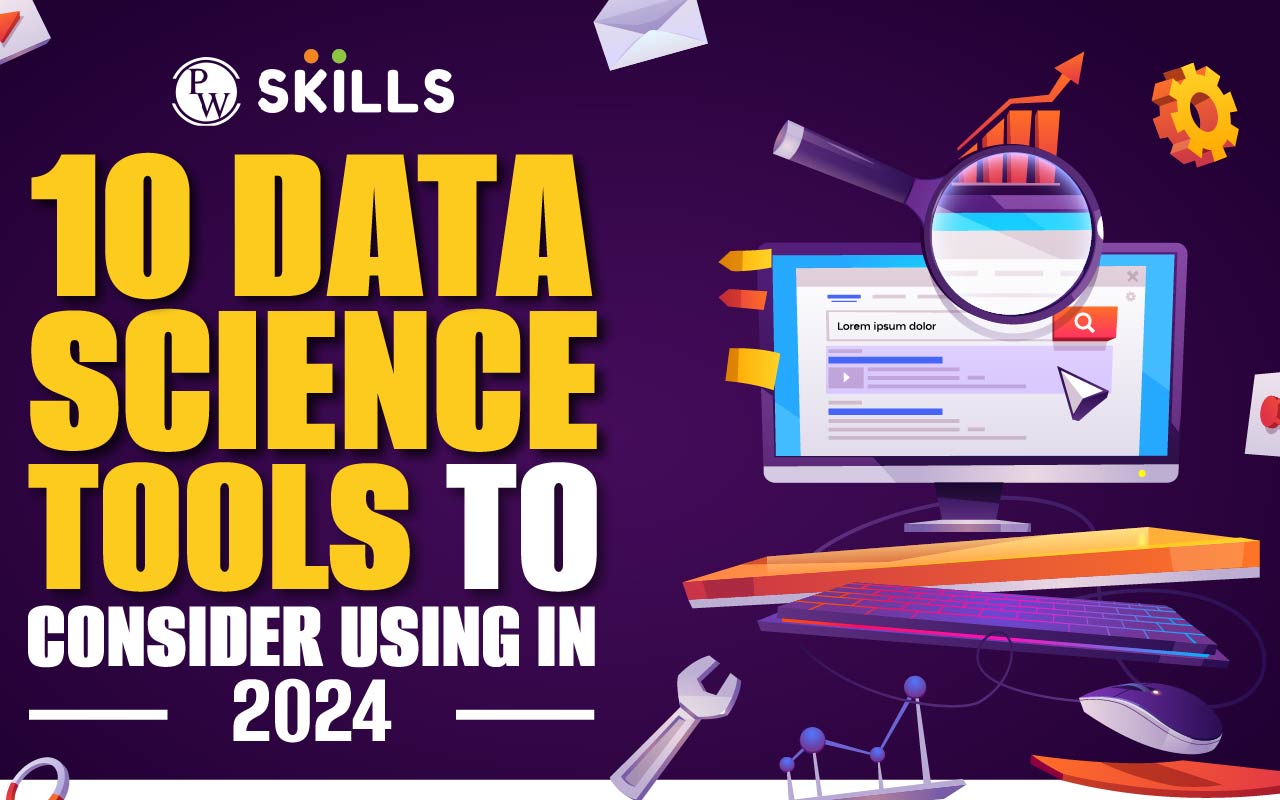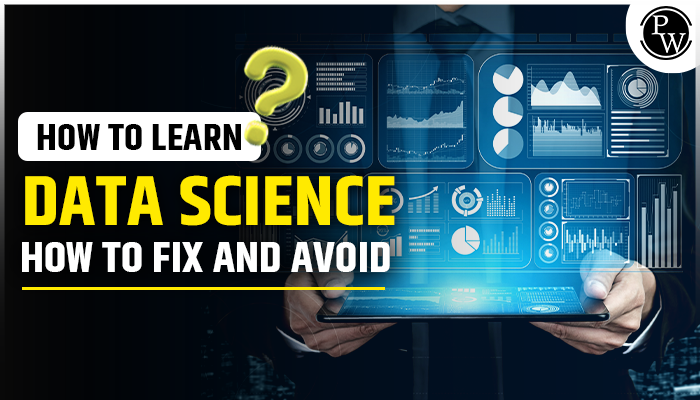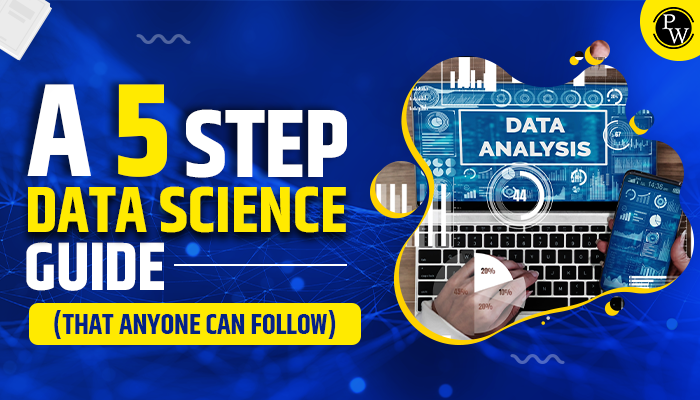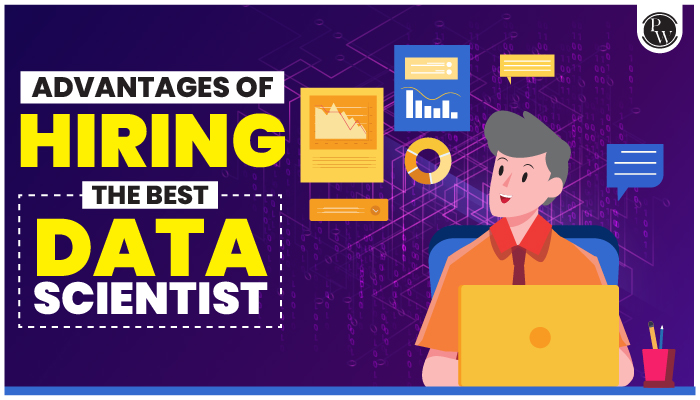Various data science tools are available for various data science applications in various industries. Keep on reading to learn about the best data science tools in 2024!
Data Science Tools: Data science stands out as one of the most rapidly advancing fields, capturing the attention and application across various industries. This multifaceted discipline delves deep into the intricate data layers, enabling organizations to derive invaluable insights.
As per a GlobeNewswire analysis, the data science market is poised to witness a robust CAGR growth of 25 percent by 2030. The core tenets of data science encompass categorizing, collecting, organizing, cleansing, and preparing data for detailed analysis and visualization. The research underscores the escalating demand for data science, driven by businesses embracing data-centric strategies.
This surge in demand translates to many job opportunities within the data science realm. Aspiring professionals keen on embarking on this rewarding journey can kick-start their learning curve with online data science courses.
Mastery of the essential tools remains pivotal for data scientists, data analysts, data engineers, and other data-centric professions. Delve into this article to explore the contemporary data science tools and frameworks indispensable for navigating a successful career in data science.

Also read: Differences Between Data Science and Analytics: Process, Skills, Responsibilities
Data Science Tools for Beginners
Here are the best data science tools for beginners:
1) Microsoft Excel (MS Excel):
MS Excel stands as a foundational tool indispensable for professionals across various domains. Especially beneficial for newcomers, MS Excel simplifies data analysis and comprehension. As an integral component of the MS Office suite, it offers a preliminary understanding of data insights before delving into intricate analytics.
With its user-friendly interface, built-in formulas, and versatile data visualization features such as charts and graphs, MS Excel facilitates straightforward data representation via rows and columns. Its intuitive design ensures that even individuals without technical expertise can decipher data presentations.
2) BigML:
BigML emerges as a cloud-based, intuitive platform for data science and machine learning endeavors. Its graphical user interface (GUI) accommodates novices, enabling model creation through effortless drag-and-drop functionalities. BigML is an invaluable asset for enterprises and seasoned professionals, seamlessly integrating data science and machine learning initiatives across diverse business sectors.
Renowned for applications in risk assessment, threat analysis, weather predictions, and more, BigML employs REST APIs to deliver user-centric web interfaces. Its suite of automation tools empowers users to streamline manual data processes and generate interactive data visualizations, enhancing analytical efficiency.
3) Apache Spark:
Apache Spark is a prominent data science tool and framework, offering a potent analytics engine adept at stream processing and batch processing. Recognized for its real-time data analysis capabilities and efficient cluster management, Spark outpaces traditional tools like Hadoop in performance. Beyond data analysis, it supports machine learning initiatives with built-in Machine Learning APIs.
These APIs empower machine learning experts and data scientists to craft predictive models effortlessly. Additionally, Apache Spark provides versatile APIs compatible with Python, Java, R, and Scala, enhancing its applicability across various programming paradigms.
4) Matlab:
Matlab emerges as a proprietary, high-caliber data science tool tailored for intricate numerical computations, simulations, and multifaceted data tasks. Researchers and data scientists leverage Matlab for functions ranging from matrix operations and algorithmic evaluations to complex statistical modeling.
Integrating visualization, mathematical computation, and statistical analysis, Matlab presents a user-friendly environment. Its applications span domains like signal processing, neural network simulations, and rigorous testing of data science models.
5) Google Analytics:
Google Analytics (GA) epitomizes a comprehensive data science tool tailored to decode and optimize website or application performance metrics. Particularly influential within the digital marketing sphere, GA enables web administrators and data science professionals to scrutinize website traffic patterns, user interactions, and engagement metrics.
Its synergy with other Google products like Search Console, Google Ads, and Data Studio amplifies its utility, facilitating holistic insights across various digital platforms.
Marketing mavens and data scientists harness actionable insights through Google Analytics, driving informed marketing strategies. Its accessible interface and robust functionalities ensure that technical and non-technical professionals can navigate and derive value from this versatile tool.
6) SAS:
SAS, conceptualized by the SAS Institute, is a renowned data science tool revered for advanced analytics, multivariate analysis, business intelligence, and predictive analytics. This proprietary software, encompassing a graphical interface, SAS programming language, and Base SAS, meets diverse data science requirements.
Many global enterprises, including Fortune 500 companies, harness SAS for statistical modeling and in-depth data analysis. Its capabilities extend to seamless data extraction from multiple sources, including databases and Excel tables, facilitating data-driven insights through its expansive statistical libraries.
7) Apache Flink:
Apache Flink is a pivotal data science tool within the Apache ecosystem, facilitating real-time data analytics. Renowned as a leading open-source batch-processing framework, Flink harnesses its distributed stream processing engine to execute many data science tasks.
Flink excels in scenarios demanding instantaneous analysis and computation—such as monitoring user web activities, assimilating data from Internet of Things (IoT) devices, tracking locations, or scrutinizing financial transactions.
It adeptly manages vast, unbounded data streams alongside structured datasets, ensuring parallel and streamlined data flow execution with minimal latency. Flink’s prowess lies in its capability to expedite processing and analysis while simplifying the intricacies associated with real-time data management.
8) KNIME:
KNIME is a versatile open-source data science tool facilitating data reporting, analysis, and mining without cost constraints. Designed for agility, KNIME empowers data scientists to extract, transform, and integrate data efficiently. Its modular data pipelining approach enables seamless integration of diverse data analysis components, streamlining machine learning and data mining endeavors.
The tool’s user-centric graphical interface simplifies workflow design between predefined nodes, minimizing the need for extensive programming skills. Furthermore, KNIME’s visual data pipelines facilitate interactive visualization, enhancing data interpretation and presentation.
Recommended Technical Course
- Full Stack Web Development Course
- Generative AI Course
- DSA C++ Course
- Java+DSA 1.0 Course
- Data Analytics Course
- Data Science with ML 1.0 Course
Data Science Tools Python
Python stands as a predominant programming language in the realm of data science. Renowned for its versatility, Python empowers professionals to analyze vast and varied datasets, whether structured, semi-structured, or unstructured.
Its user-friendly syntax and extensive library ecosystem facilitate tasks such as data analysis, cleansing, and visualization. Python’s applicability extends beyond its data science capabilities to mobile, desktop, and web application development. Its robust community continually enhances its library offerings, positioning Python as a go-to tool for data science and software development endeavors. Here are the best data science tools for Python:
1) R Programming:
R is a formidable contender to Python in data science, lauded for its prowess in statistical computing and data analysis. R has a refined user interface and remains at the forefront of data science due to its expansive collection of packages like tidyr, dplyr, and ggplot2. Its open-source nature, coupled with robust machine learning algorithms, underscores its significance in the data science landscape, with its operations seamlessly integrated within RStudio.
2) MongoDB:
MongoDB, a renowned NoSQL database management system, offers data scientists a platform to efficiently handle semi-structured and unstructured data. Diverging from traditional relational databases, MongoDB excels in document-oriented data management, boasting features like dynamic querying, JSON-based data storage, and robust replication capabilities. Its proficiency in handling extensive datasets and scalability attributes further solidify its standing as a pivotal data science tool.
3) D3.js:
D3.js, short for Data-Driven Document, represents a premier JavaScript library tailored to craft interactive web data visualizations. Its client-centric approach facilitates dynamic data processing and visualization, integrating seamlessly with CSS for enhanced visual appeal. D3.js supports multiple data formats, from JSON to CSV, enabling users to create charts and graphs for enriched data representation.
4) Jupyter Notebook:
Jupyter Notebook is an invaluable computational tool, facilitating efficient data management and interaction. Catering not just to seasoned data scientists but also to researchers and Python novices, Jupyter’s hallmark lies in its intuitive data visualization capabilities and computational prowess. As an offshoot of the Python project, Jupyter extends its support to multiple programming languages, including Julia, Python, and R.
5) Julia:
Julia emerges as a dynamic, high-performance programming language tailored for swift data science operations. Celebrated for its rapid execution and computational efficiency, Julia is likened to Python and R, boasting Just-in-Time (JIT) compiling capabilities that rival languages like C++ and C. Its memory management capabilities, combined with its prowess in intricate statistical calculations, position Julia as a rising star in the data science domain.
6) Pandas
Pandas is a renowned open-source Python library tailored explicitly for data analysis and manipulation within Data Science. Particularly adept at handling numerical tables and time series data, its versatile data structures facilitate efficient data manipulation, enhancing the overall data analysis experience.
Within the Pandas framework, the Series and DataFrame Objects are pivotal array and table structures, adeptly handling diverse and homogeneous datasets. Moreover, Pandas boasts an integrated data visualization capability, empowering users to craft various plots and charts seamlessly.
Furthermore, Pandas offers extensive flexibility in data management, supporting multiple file formats such as JSON, CSV, and HDF5, among others. Additionally, its functionality encompasses the capability to label both series and tabular data, further refining the data representation process.
Also read: Data Visualization in Data Science: Types, Tools, Best Practices
Data Science Tools and Frameworks
Below are data science tools and frameworks:
1) Scikit Learn:
Scikit-learn is a prominent machine-learning library built on the Python framework. Boasting a plethora of supervised and unsupervised algorithms, it seamlessly integrates with other data science staples like Matplotlib, Pandas, NumPy, and SciPy.
This comprehensive toolkit offers functionalities ranging from regression analysis and clustering to data preprocessing and dimensionality reduction. Designed for simplifying complex ML algorithms, Scikit-learn has garnered a vast community following, facilitating continual contributions and enhancements.
2) Rapidminer:
Rapidminer offers a holistic approach to data science, emphasizing visual workflow design and automation. Its user-friendly interface caters to a broad spectrum of users, from novices to seasoned professionals, enabling real-time data tracking and advanced analytics.
With capabilities spanning real-time analysis, predictive modeling, and comprehensive reporting, Rapidminer stands out for its scalability and security features, making it a go-to choice for organizations aiming for data-driven excellence.
3) DataRobot:
DataRobot combines data science tasks with machine learning and artificial intelligence, amplifying team productivity. Its intuitive drag-and-drop interface streamlines operations for novice and expert data science professionals, facilitating the rapid development and deployment of myriad data science models. By championing automation and predictive analysis, DataRobot empowers enterprises to make informed, data-driven decisions effortlessly.
4) TensorFlow:
TensorFlow reigns supreme as a leading tool in data science, renowned for its extensive machine learning and deep learning libraries. It provides robust visualization capabilities to facilitate the development of data analysis and ML algorithms.
Utilized extensively by professionals, TensorFlow powers applications across various domains, from image recognition and natural language processing to complex simulations and neural network architectures. Its foundational elements are built upon Google Brain’s innovative prowess, making it a pivotal asset for data-driven endeavors.
5) NLTK:
The Natural Language Toolkit (NLTK) emerges as a pivotal Python-based toolkit tailored for natural language processing tasks. With its user-centric interface and expansive repository of data collections and resources, NLTK aids in developing language-centric ML models. Applications ranging from machine translation and speech recognition to text analysis benefit from NLTK’s capabilities, making it indispensable for modern data science endeavors.
6) Microsoft Power BI:
Microsoft Power BI is a cornerstone in business intelligence, empowering users to craft immersive data reports and visualizations. Integrating with Microsoft’s suite of data science tools amplifies productivity and enhances analytical capabilities. Its intuitive visualization features transform disjointed datasets into coherent insights, catering to technical and non-technical stakeholders.
7) QlikView:
QlikView is a trailblazer among data science tools, offering unparalleled data analysis and visualization capabilities. Its swift processing speed and unique visualization features enable professionals to effortlessly discern intricate relationships within vast datasets. QlikView streamlines operations by automating data entity relationships and accelerating data processing, making it an indispensable asset for data-centric endeavors.
Designed for individuals enthusiastic about delving into machine learning, “Decode Data Science with ML 1.0” by Physics Wallah aims to bridge the gap between theoretical knowledge and practical application. Use the “READER” coupon to get discounts on PW courses. Through this course, students can expect to acquire a holistic understanding of Python’s applications in machine learning, enabling them to embark on projects, solve real-world problems, and contribute meaningfully to the evolving field of data science.
Also read: What Is the Importance of Statistics for Data Science in 2024?
FAQs
What are data science tools?
Data science tools are software applications, platforms, or frameworks that collect process, analyze, visualize, and interpret large volumes of data to derive actionable insights.
How does R contribute to data science?
R provides a comprehensive environment for statistical analysis and graphical representation. Its extensive library repository, including ggplot2 and dplyr, makes it a preferred choice for statistical modeling.
What are some essential data visualization tools?
Tools like Tableau, Power BI, and Matplotlib are widely used for creating interactive and insightful data visualizations to represent complex data in an understandable format.
How do data science professionals use SQL?
SQL (Structured Query Language) is pivotal for managing and querying relational databases. Data scientists utilize SQL to extract, manipulate, and perform advanced analytics on structured data.
How do cloud platforms like AWS and Azure support data science?
Cloud platforms like AWS (Amazon Web Services) and Azure provide scalable infrastructure, storage solutions, and a suite of tools for data science, allowing professionals to execute large-scale computations analytics and deploy machine learning models efficiently.




